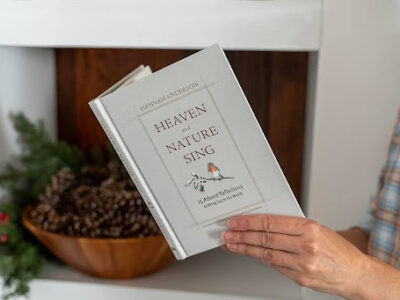I was seven years old when Disney’s The Little Mermaid was first released, and while, yes, I have every song from the movie permanently embedded in my brain, the animated film itself isn’t one of my favorites. I connected more with the bookish and “odd” Belle from Beauty and the Beast, the script of which I have every line committed to memory.
Despite my lukewarm feelings about the original, I have loved all of the live action films Disney has released in the last few years, including The Lion King, so I was curious to see what Disney did the same and what they chose to do differently this time around.
The Little Mermaid
The live action version of The Little Mermaid follows the same familiar plot line as the original—Ariel, one of the mermaid daughters of King Triton, is fascinated with the world above the water line. However, her father believes the human world is unsafe for merpeople and forbids Ariel from going to the surface.
King Triton’s rigid rules and sharp prejudices drive a wedge between himself and his idealistic daughter. Being a teenager, this of course doesn’t stop Ariel from exploring the world for herself, stretching her fins and following her curiosity wherever it might lead.
One night, she witnesses the shipwreck of a local prince’s boat, Prince Eric, who is thrown overboard. Ariel rescues Eric, and in those brief moments falls in love with him.
Eric, for his part, is captivated by the siren song of his rescuer and is desperate to find the woman who brought him to shore. The siren song is an aspect of The Little Mermaid story that seemed to be emphasized more directly this time around. In Homer’s The Odyssey, the song of the sirens was so alluring that it could woo a man to his death. But without Ariel’s voice when she goes to shore, it takes more than just a beautiful song to win Eric’s love.
With the assistance of the villainous sea witch, Ariel trades her life under the sea for one on land, determined to both experience a whole new world and win love’s first kiss in just three short days. But when the plan to make her own life above the water line is thwarted by the sea witch, it takes a series of self-sacrificial efforts to make things right, mend the break, and bring about peace and harmony between two cultures that were otherwise divided.
Finding the Love: Faithifying Your Viewing
The independent woman in me wrinkles my nose a bit at the need of the mermaid to change her body and lose her voice in order to pursue a man… But, also, how often did I do that as a young woman? Isn’t that the temptation, to become something we’re not, in order to find someone who will love us?
Of course that should never be the case, which is why I’m grateful for some slight alterations to the script in this version of the story.
The live action mermaid trades “her mermaid powers” rather than “her voice,” which is an important distinction. If the mermaid song is one that can trick any man into striding confidently to his death, then surrendering this power would actually root Ariel and Eric’s love more firmly in their shared interests, values, and beliefs rather than in beauty and deceptive song.
But if that feels like a stretch to you, I get it, and it is and remains one of the reasons The Little Mermaid isn’t my favorite Disney film.
That doesn’t mean there isn’t much to appreciate.
Over and over in The Little Mermaid, the rules of the underwater world get in the way of relationships. King Triton prohibits interacting with the humans because they’re all dangerous, in the same way Jews were forbidden from interacting with Gentiles in the Gospels. Rules built walls between all kinds of people groups.
Meanwhile, Jesus set out to tear down walls, metaphorically speaking. Places Jews avoided, Jesus walked through and ministered to. People Jews shunned, Jesus sat down to eat and drink with. People Jews wouldn’t touch, Jesus healed. Laws Jews wouldn’t break, Jesus intentionally broke to show the greater law of love to humankind.
In this way, Ariel is a line crosser. She deliberately sacrifices her power to venture into someone else’s culture, and by doing so, she builds bridges and relationships that reconcile two otherwise fearful groups to one another.
I would be remiss to not mention the beautiful diversity of the characters in this film, another dramatic departure from the original. This shift successfully highlights the value and wonder of a diverse community of people that, according to my memory, was not present in the earlier animated version. The story of tension between merpeople and humanity is intrinsically about racism, but the presence of so many different ethnicities in the film makes the message of racial equality and reconciliation explicit, so that we can’t miss it.
I believe it was Paul who said, “Here there is no Gentile or Jew, circumcised or uncircumcised, barbarian, Scythian, slave or free,” merperson or human, “but Christ is all, and is in all” (Colossians 3:11). With Christ in all, what matters most to the Lord of the universe is relationship, and relationship is built on love, and love is the law that trumps all others, heals all wounds, and lasts forever.
Our human—and mermaid—efforts to bridge the gaps and let love pave the way often fall short or are compromised by those who seek their own positions of power and authority over the wellbeing of others. When that happens, and it is promised that it will, it is the most powerful love of all, self-sacrificial love, that reigns victorious.
It is this love that ultimately wins in The Little Mermaid, as King Triton sacrifices himself for the life of his daughter. Love trumps hate, and even though it took a dark battle to get there, love creates a better world for all. Love compels Ariel to break down racial barriers, and it is love that ultimately restores her relationship with her father and unites two divided kingdoms.
Now that’s a story I can celebrate.





 Copyright
2025
Root and Vine
Copyright
2025
Root and Vine